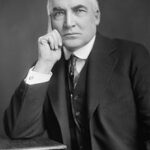The Historic Decision
President Warren G. Harding’s Veterans Bureau expansion in 1921 marked a pivotal moment in American veteran care. The decision consolidated scattered veteran services under one comprehensive agency. This streamlined approach replaced the fragmented system that had struggled to serve returning WWI soldiers effectively. 📊 Over 4.7 million Americans had served in World War I, creating unprecedented demand for veteran services.
Comprehensive Reform Package
The Veterans Bureau expansion included substantial funding increases for veteran healthcare facilities. Harding allocated resources for new hospitals and medical centers across the nation. The program enhanced disability benefits for war-injured veterans significantly. Vocational training programs received major funding boosts to help veterans transition to civilian careers. 💰 The total budget allocation reached $500 million, representing a dramatic increase from previous veteran spending.
Administrative Innovation
The Veterans Bureau expansion centralized previously scattered services under unified leadership. This consolidation eliminated bureaucratic delays that had plagued veteran benefit processing. The new system established standardized procedures for benefit applications and medical care. Regional offices expanded to provide better access to veteran services nationwide.
Impact:
Immediate Benefits for Veterans
The Veterans Bureau expansion dramatically improved healthcare access for WWI veterans across America. Hospital construction accelerated, providing specialized care for war injuries and trauma. Disability benefit processing became faster and more reliable under the centralized system. 📈 Veteran satisfaction rates increased significantly as services became more accessible and comprehensive. Vocational training programs helped thousands of veterans secure stable employment in civilian careers.
Long-term Institutional Legacy
Harding’s Veterans Bureau expansion established the foundation for modern veteran care systems in America. The organizational structure became the blueprint for future veteran administration reforms. This comprehensive approach influenced veteran care policies for decades to come. 🌍 The program set international standards for veteran care that other nations studied and adopted. The emphasis on healthcare and rehabilitation became a permanent feature of American veteran policy.
Political and Social Consequences
The Veterans Bureau expansion earned bipartisan praise and strengthened public trust in government. Veterans’ organizations strongly supported the comprehensive reforms and increased funding. The program demonstrated effective federal management of large-scale social programs. Public approval of government veteran care increased substantially following the expansion’s implementation. This success helped establish veteran care as a permanent federal responsibility.
